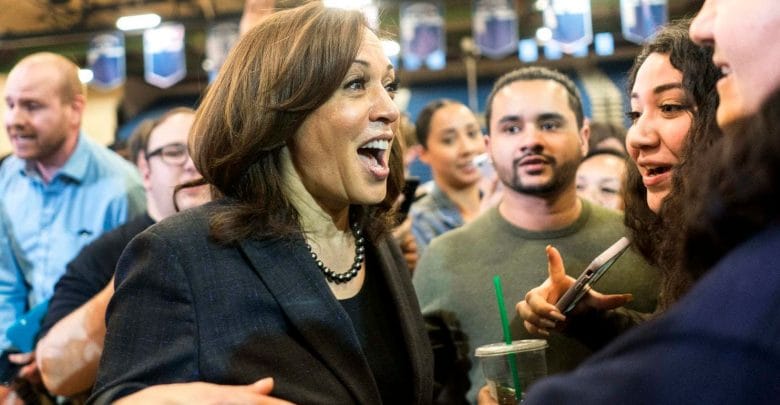
What early polls tell us — and what they don’t
An 8-point jump in support for California Sen. Kamala Harris stands out in a new CNN Poll conducted by SSRS that shows a field of four in double digits in the race for the Democratic nomination for president.
Former Vice President Joe Biden (28%) and Vermont Sen. Bernie Sanders (20%) continue to hold the top slots in the large Democratic field. Harris now stands at 12% support among Democrats and Democratic-leaning independents, up from 4% in December, and the latest entrant to the field — former Texas congressman Beto O’Rourke — stands at 11%.
Harris’s rise comes across the board — there is no major demographic group in which she lost support since December — but her gains are more pronounced among Democrats (+10 points) than independents (+5), liberals (+10) more than moderates or conservatives (+7), women (+9) more than men (+6), and racial and ethnic minorities (+10) more than whites (+6).
Rounding out those actually in the race with more than 1 percent of the vote are: Sen. Elizabeth Warren (Mass.) at 6 percent, and Sen. Cory Booker (N.J.) and Amy Klobuchar (Minn.) at 3 percent. (For some unknown reason, the poll included former senator and secretary of state John F. Kerry, who’s shown no real sign of readying a run. He drew 4 percent.) By 21 percentage points (56 percent to 35 percent), Democrats prefer a candidate who can win over a candidate who shares their positions on issues.
Let’s consider what the poll does not tell us. It’s not predictive of the outcome, so it’s not accurate to say someone is “winning.” (This is a snapshot, not a crystal ball.) It does not tell us the degree to which name recognition plays a role in keeping Biden and Sanders at the top.
We do learn a few things, however.
First, Harris is a legitimate top-tier candidate at present whose roll-out might be the gold standard for the cycle. She increased her name recognition during a period in which relatively few contenders were in the field and, at this stage, is not dependent on a single group of voters for support.
Second, Biden is far and away the most popular contender among moderates (32 percent; 11 points higher than Sanders), higher-income voters (34 percent) and seniors (43 percent). Since these voters remain a large, active segment of the primary electorate, he’s got a reliable base of support. He also has the advantage of appearing more electable (51/36) than Sanders (33/56). It will be fascinating to see whether Biden’s entry in the race allows him to siphon off substantial support from others, and if so, who suffers the most.
Third, O’Rourke doesn’t magically rise to the top simply by showing up. We should again emphasize that while the political media and activists react to fundraising totals, know who he is and have a sense of his rhetorical skills, he has yet to introduce himself to the vast majority of voters.
Fourth, those candidates who are still stuck at 1 percent or less aren’t out of it but, to get attention, they will need to either break through in the debates or find some way to otherwise stand out in the crowd. Turning in a great town hall performance in March before most voters are focused on the race isn’t going to lift them from obscurity. Unless they get on the debate stage, stay there and make an impression, their chances of moving up are slight.
Finally, money helps — but it’s not everything. Sanders has raised a boatload of money, but got less of a bounce between polls (6 percentage points) than did Harris (8 percentage points) who raised far less. Biden hasn’t yet raised a dime for the race and, for that matter, hasn’t officially entered. In the big picture, the most important thing that early polling does is to inevitably separate the field into top and bottom tiers. The four in double digits (Biden, Sanders, Harris, O’Rourke) are likely to get more media attention and, hence, will have an easier time raising money. The rest will have to rely on debates and retail politics in early states.
Conversely, the top and bottom tier perception helps shape expectations. A fourth or fifth finish, say, in Iowa for someone not in the top tier is a “win” and opportunity to be crowned the dark horse. A top tier candidate who doesn’t finish in the top two or three may be in for a batch of “candidate in disarray” stories.
